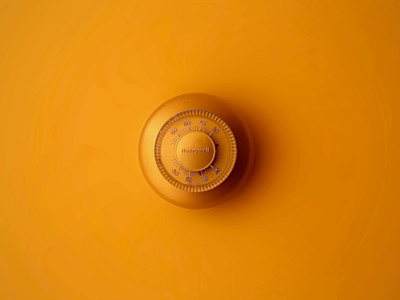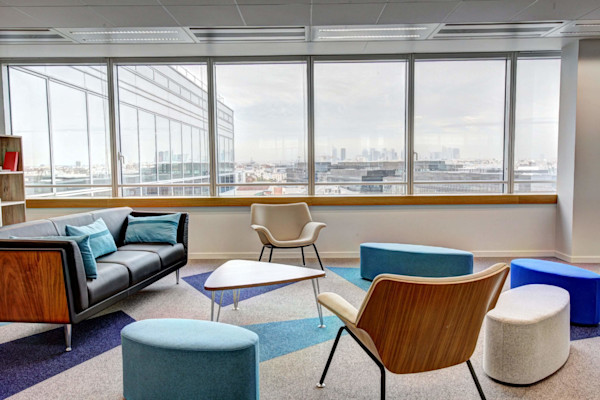The Office Temperature Debate is Still Hot and Cold

The Office Temperature Battleground
Nina in building operations knows where the treasure is and has the keys to get to it. The plan is for her officemates to set up a distraction so she can slip in and out unseen. When the trap is set, she waits until the coast is clear, scampers to the secret location hidden in the back corner of a supply room, and captures the enemy’s flag: setting the thermostat warmer so she and her fellow female employees don’t freeze in the full blasting office air conditioning. Bob pulls at his tie, getting uncomfortable in his meeting despite his short-sleeved shirt, and as his brow becomes damp, he realizes why: someone monkeyed with the temperature of the building. As soon as his meeting ends, he hurries to the supply room and confirms that it's warmer than the temperature he had set that morning. As the building's manager, he disregards any repetition of the argument for reducing HVAC expenses. If people can’t work comfortably, a few dollars saved on utilities doesn’t make up for lack of productivity when employees are too hot. He pulls out his keys, unlocks the safety case around the device, and lowers it to a comfortable level, hoping when he returns to his desk, his email hasn’t exploded with complaints. While this is a dramatization, it’s a common office feud, and each side is pretty evenly split by gender. It strains interoffice relationships and has the potential to tank productivity. A few degrees’ swing in either direction, and half the building’s occupants are uncomfortable and lethargic from either being too hot and sweaty, or shivering and wearing layers despite the calendar reading July. For many offices, it’s the quintessential question: in the mercury wars, who’s right, Team Put On a Sweater, or Team Bring a Personal Fan?
The Science
Technically, both sides are right. Office temperature directly affects productivity. A study by CareerBuilder shows more than half of all surveyed employees can’t work as well in a chilly environment. Cornell University conducted research into actual efficiency of employees and found fewer typing errors when the office temp was set at 77F, with an error rate of 10%. With the temperature set to 68F, that rate jumped to 25%. Further research suggests warmer temperatures positively impact feelings of trust and empathy, which encourages interoffice connections.
Experts recommend maintaining a gender-balanced office temperature at 75F or within the range of 72F to 77F as the new sweet spot.
Women’s body chemistry is different from men’s, and the conventional wisdom of a cooler office (below 70F) being better for employees was born out of the middle of the 20th century, when fewer women were in the workforce. Due to a lower metabolic rate and slightly higher body fat percentages, women in the office are more sensitive to cold than men. Considering the ratio of men to women in the office becomes essential for creating a comfortable working environment. In a study on how men and women performed in math, verbal, and cognitive areas at temps in a range of 61F to 91F, women fared better between 70F and 80F, while men excelled at temps below 70F. The study revealed that women experienced a more negative impact when feeling cold, compared to men who experienced excessive warmth. Age plays a role as well. The older a person is (particularly over 55), the more susceptible to temperature we become. Humidity also contributes to perceived temperatures. Colder feels drier, while warmer feels stickier. While high humidity feels oppressive, setting the humidity too low can cause dryness in the skin and nasal passages. Another crucial fact to note is that experts consider a humidity level of 40% to be optimal for year-round comfort. The new sweet spot for temperature in a gender-balanced office is recommended at 75F, or at least between 72F and 77F.
More than a Number
To many, 75F seems warm, and in the mercury battle, everyone has an opinion, and they’re frequently vocal about it. Men, in particular, may read that the office temp should be 75F and cringe at the idea. There are, however, ways to accommodate those unhappy with the decision over the office temperature.

>> Seating matters in your modern office. Make the right impression with your design choices.
Rearrange Seating: Have Individuals Closer to Office Air Conditioning Units Who Work Better in Colder Environments
What does your office look like? Are there sweeping high ceilings where poor air circulation is an issue? Are there large windows letting in lots of natural light and ambient heat from the sun? Consider placing the employee wearing a sweater and fingerless gloves closer to the heat source. This will help them stay warm and move them away from the constantly humming AC vent. Save that location for those who prefer to be cooler.
Put your building’s design to good use with strategic seating options and policies that allow employees some freedom in how they handle the office temperature.
Consider the gender distribution and whether certain areas have more women or men. If employees have temperature preferences and seating policies are flexible, create temperature zones. Let employees choose their preferred work area. This, however, may not be ideal for the long term because, as the science suggests, you could end up with very gender-split working areas, which could definitely lead to additional unrelated problems.
Small Appliances
Many offices ban space heaters, but safety for these devices has come a long way. If you allow small desktop fans, it may be fair to also permit space heaters. To address concerns about a blanket allowance for appliances, you can provide a list of approved models. Make sure the models fall within a reasonable price range for your employees to choose from. Offering two or three well-researched options allows some control over the appliances employees bring in.
Consider the Dress Code
Across the business world, office dress codes are moving toward more casual every day. Allow men wearing suits the flexibility to choose a slightly less formal attire in lighter fabrics for higher temperatures. Providing the same freedom as women's business dress, which offers more variety, can greatly reduce complaints. Your employees shouldn’t dread coming into the office if they know they’re going to sweat or shiver all day. Put your building’s design to good use with strategic seating options and policies that allow employees some freedom in how they handle the office temperature. Members of both Team Hot and Team Cold will thank you for it.



